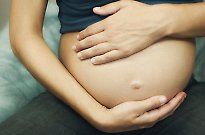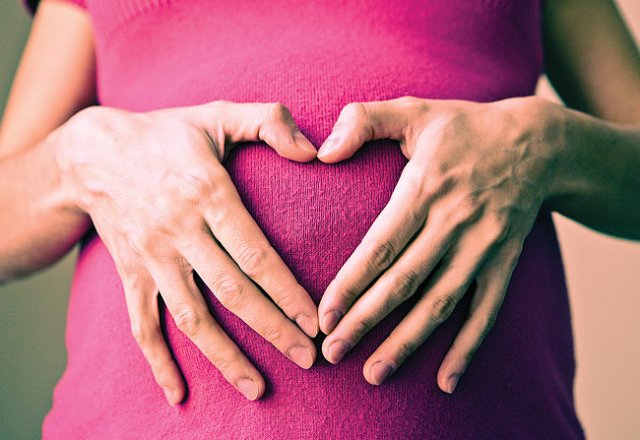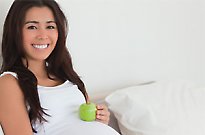
Chinese medicine for pregnancy

We chat with Dr Karen Pohlner
Shannon Dunn discovers how the Eastern perspective, and in particular Chinese medicine, can help nurture a healthy baby in vitro.
Caring for another begins in the womb, with special consideration and nutritional choices to be made to ensure the wellbeing of the baby and mama.
Having a healthy pregnancy for benefit of baby and mother goes well beyond the old belief of simply eating for two. From essential nutrients to keeping calm, the nine months of gestation is a sacred time – and a period when taking stock of our everyday habits has never been more important.
While many nutritionists and doctors agree that a balanced diet is crucial to birthing a vibrant newborn, iron, calcium, omega-3 fatty acids, magnesium, zinc and folic acid aren’t the only essentials to fuel up on. Regular exercise such as walking and pre-natal yoga, deep breathing, meditation and getting amongst nature are also habits that may benefit baby through the nine months of gestation.
In modern-day Australia, once pregnancy is confirmed, the mother generally becomes a patient within the Western medical system, undergoing routine ultrasounds, consuming chemically processed drinks to identify gestational diabetes, having blood tests, being measured and so on. Depending on the patient, such examinations can create stress, particularly for first-time mothers-to-be, making relaxation and calming therapies an important addition to a pregnant woman’s schedule.
According to women’s health expert and Melbourne-based Chinese medicine practitioner Dr Karen Pohlner, co-author of Unlocking the Mysteries of Chinese Medicine (Bamboo Spirit Publishing), an Eastern perspective on pregnancy offers a gentle yet highly effective approach to fostering the health of baby and mother throughout pregnancy – and can be used very successfully in conjunction with traditional Western treatments.
While there are many benefits from treatment throughout pregnancy, it’s during the third trimester that Chinese medicine can help prepare mother and baby for the impending birth. Weekly acupuncture treatments from 34 weeks are recommended to prepare mother and baby for a comfortable labour.
“No one has a crystal ball to predict how a labour might turn out, but pre-birth acupuncture treatment can help women get into the best possible condition for safe, efficient, natural labour and childbirth,” Pohlner says.
“All women anticipating a vaginal birth are potential candidates for pre-birth acupuncture, including primigravida (woman in her first pregnancy), multigravida (second or more) and vaginal birth after caesarean section (VBAC), as well as women who have experienced previous birth trauma.”
Chinese medicine and pregnancy
More than simply placing needles, Chinese medicine is a synergistic blend of treatments that have been known, for centuries, to help mother-to-be have more comfortable pregnancies and even more calm births.
Acupuncture
Placing special needles at designated meridian points during pregnancy ensures the body maintains optimal energy – particularly important considering the various changes the body, and baby, goes through during the three trimesters. Used for thousands of years to assist women with healthy pregnancies, acupuncture has been used successfully to treat the nausea and vomiting associated with morning sickness. The ancient technique has also been used to reposition breech babies and induce when the pregnancy is over term.
“The ancient Chinese observed that once a woman’s monthly period stopped as a result of pregnancy, the natural downward flow of menstruation ceased,” explains Pohlner. “The blood and energy normally expelled each month instead backed up in the uterus to provide the nourishing substrate essential for supporting the growing foetus – this excess energy and blood has the tendency to ‘rebel’ upwards and disrupt digestive function, producing the symptom of nausea and vomiting.”
Moxibustion
A healing modality that uses the ancient mugwort herb, this indirect heating method, also known as moxa, can be used to turn a breech baby into the correct position, ready for labour. Moxibustion can also assist with back issues and blood deficiency problems such as anaemia.
“The stick is lit and burned over the acupuncture point known as UB67, located on the outer, lower edge of the mother’s little toenail,” Pohlner says. “This point is selected as its forte is in correcting malpositioned babies. The radiant heat produced by the moxa stimulates the point and helps the baby somersault into the head-down position.”
Cupping
Used during pregnancy to purify the blood and drain the lymphatic system, cupping is a painless, non-invasive treatment and a welcome relaxation technique for back-weary mothers-to-be. The technique involves applying a vacuum cup on the skin, which pulls up the superficial muscle layer. Favoured for its ability to increase blood flow and relieve pain, it’s also used to expel external pathogens. It is used as an adjunct treatment to acupuncture and Chinese herbal medicine. It can also be a standalone therapy for women who prefer soothing hands-on techniques. It is often combined with massage.
“Cupping stimulates circulation in the body, relieves pain and relaxes tired aching muscles,” Pohlner says. “It is especially useful for women in the later stages of pregnancy as the physical demands of carrying a growing baby places extra pressure into the pelvis and causes neck and shoulder strain in the upper body.”
Nutrition and herbs
According to Chinese medicine philosophy, women should avoid making significant dietary changes during pregnancy and simply add in more fresh wholefoods such as organic fruit and vegetables, as well as at least eight glasses of spring water, to their diet. Unless there is a medical condition such as gestational diabetes, which must be managed under the supervision of a dietician or nutritionist, pregnant women should only aim to make small, achievable, sustainable changes in their diet and nutrition.
“Registered practitioners of Chinese medicine will each have their preference on advising the use of Chinese herbal medicine during pregnancy,” Pohlner says. “My preference is that unless there are signs or symptoms – which must be assessed by a qualified practitioner – that indicate intervention is necessary, then it’s best to leave nature alone.”
Shannon Dunn is a wellness writer and eco beauty editor at: ecobeautyeditor.com


